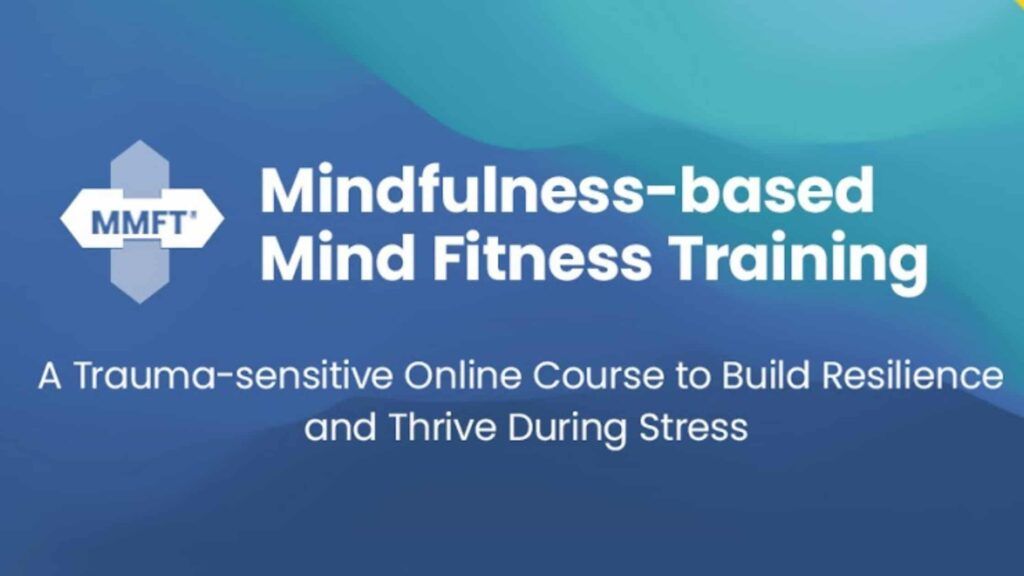Mindfulness – A term that has become widely popular off late. I am sure you have read about it or must have heard about mindfulness at your workplace or from colleagues ? I remember the first time I heard about Mindfulness my reaction was – Isn’t my mind already full with a lot of things, what more should I fill it with 🙂
So what exactly is Mindfulness ? How is it different from Meditation or is it the same ? Why should you practice it now and most importantly how should you do it ? This post has all the answers you are looking for, so grab your mug of coffee and read on…
A journey from Mindlessness to Mindfulness
You are eating a packet of chips and in no time you are holding an empty packet in hand and wondering where did all the chips go. You are driving to your destination, you reach your destination and you hardly remember anything about the journey. You were looking for something on the internet and ended up browsing social media platforms. I am sure you have come across such instances, this is called Mindlessness. A state where our mind goes on autopilot and we lose connection from our ‘present moment’.
Mindfulness is the opposite of mindlessness. It is the ability to stay focused in the present moment, be aware of where we are, what we are doing and not get swept away in thoughts of past or future. You might be wondering isn’t this difficult ? Is it even possible to stay focused and be present all day long ? Well…it requires practice. I will show you how to practice mindfulness as you read further, first lets debunk this question.
Is Mindfulness & Meditation the same ?

In true sense these are two sides of the same coin. Both are life skills which rely on our ability to focus on the present moment. Both practices increase our happiness and reduce our suffering.
Meditation – Focuses Inwards
- Meditation is not some switch which you can turn off so that your mind stops to think.
- It is practice that trains your mind to witness all thoughts going in your mind and not get engaged with them.
- It helps to break the loop or chain of “inner chatter” which constantly runs in our mind.
- Meditation is usually performed by sitting at one place for 5 or 10 minutes in the morning or evening or both.
Mindfulness – Focuses Outwards
- Mindfulness is a practice that trains your mind to stay focused in the present moment at any give point of time.
- It stops the mind by going on autopilot and deliberately brings the focus on the NOW.
- It can be performed any time, while having food, taking a shower, brushing teeth or walking.
- Mindfulness is all about engaging your 5 senses i.e. See – Hear – Smell – Feel – Taste at any given moment.
Now that you know the distinction between Meditation and Mindfulness it’s time to learn key principles of mindfulness.
3 Key Principles of Mindfulness
1. Being Non-Judgemental

When you judge, you are adding layers to your suffering or experience. Let me explain this with an example:
Assume you got fired from your job, now see how you might judge this situation
- I got fired from my job (First Thought)
- Now what will I do (Layer 1: Concern)
- Is the job market good, will I find a new job soon (Layer 2: Concern)
- It’s going to be difficult going forward (Layer 3: Concern)
- What will my friends say (Layer 4: Concern)
- I am not as qualified as my friends (Layer 5: Doubt)
- I am a failure, I hate myself (Layer 6: Self Criticism)
Layers are multiple thoughts which occur instantaneously throughout the day and color the situation or experience before the mind has even processed it. It is this breakneck speed of thoughts or loop which needs to be slowed down to gain control over our mind.
2. Become a Keen Observer

You and your thoughts are separate. Instead of getting overwhelmed with thoughts and loosing your peace of mind, you can instead learn to be keen observer of your thoughts. When you observe your thoughts, you take the emotions out of it. In the above example if you notice, each thought carries an emotion, it can fear, doubt or concern.
Here’s what you can do when you are engulfed by worrying or negative thoughts:
You observe every thought, label it and move on to next thought. The most important thing is not to actively engage in these thoughts. Let me show you, how you can practice it. I am using the same example as above:
- I got fired from my job (First Thought)
- Now what will I do (Label: Worry Thought)
- Is the job market good, will I find a new job soon (Label: Concern Thought)
- It’s going to be difficult going forward (Label: Worry Thought)
- What will my friends say (Label: Worry)
- I am not as qualified as my friends (Label: Past Thought)
- I am a failure, I hate myself (Label: Self Criticism)
As soon as you start ‘labeling’ the thoughts, the speed of thoughts will slow down and the turbulent mind will become more calm and more peaceful.
3. Acceptance
When you become non-judgmental and keen observer of your thoughts, you might start questioning yourself –
Why do I think such thoughts ? Why am I so negative ? Why can’t I think positive ?
At such times, it is important for you to be patient with yourself and accept these thoughts compassionately. Don’t get upset over them or become over critical. Just accept them and move forward. Make sure you don’t get entangled. I usually say this mantra (I accept these thoughts and love myself) and then smile – It works 🙂
5 Steps To Practice Mindfulness Anytime During The Day!
1. Deliberate effort to focus on NOW
You need to make a conscious effort to focus on present moment. Start with you breath, feel the air going in, your chest rising, feel the air going out and chest going down.
As you become aware of your breath, notice what you can see in front of you, around you, see the color, texture. Then notice what you can hear around you. Notice the surrounding smell, the taste in your mouth.
2. Attention: What’s going on in your mind ?
What are you thinking right now ? How do feel now ? Just observe the thoughts, emotions and label them. Do not engage in any future or past thoughts. Just pay attention and move on to the next thought.
3. Don’t be hard on yourself
Accept the feelings and emotions which arise in your mind. It’s futile to get upset over them. Acknowledge these feelings, if you wish, you say in your mind “I am feeling angry” or “I am feeling jealous”. Do not counter these feelings with a “Why” i.e. Why am I feeling angry or jealous ? Just notice them and move on.
4. Return to present moment
Carry on with your work and do what you are supposed to do. Take action and move forward.
5. Try to repeat the above four steps every 30 minutes
By repeating this exercise every 30 minutes, you can train your mind to be in the present. Mindfulness requires practice, it is life skill which can be learnt with repetition. Like any habit it requires time and practice – Why don’t you START today, rather NOW.
Do you want to learn more about mindfulness and improve your skills? I can assist you with a selection of excellent mindfulness training programs. Take a look at my top three recommendations, which I’ve reviewed for you. Explore them and discover how mindfulness can significantly impact your life!





This is an extremely insightful article, thank you for sharing. I am guilty of mindlessness from time to time. I own a cab company and I can fill your ears full of stories but sometimes I find myself driving on autopilot when I am transporting a fare or on my way home. I have even inadvertently came close to taking a guest home with me (when we were in the general area) by not being in the moment. This post has inspired me to make an effort to practice being mindful daily. It will also help me to focus on one task at a time rather than attempting to do many things at once. — Kudos, Julie
Hi Julie,
I am glad to know that this post has inspired you to begin your mindful practice. Let me give you one more tip, as you said while transporting you often drive on autopilot – If possible, make use of post-its (Sticky Labels) near the speedometer or near the windshield with words “Life is Now”.
This can act as a cue, every time you see this, make a conscious effort to be more present ~ Stay Blessed 🙂
I meditate regularly. But in recent months, I find it hard to meditate. So much in my mind. I think I need to practice more mindfulness. And I thank you for this article with lots of helpful tips.
I love the 3 key principles and the 5 steps. I will keep the principles in mind. And I will follow the 5 steps. Will give it a try. And I hope I can get back to the days when I had such good meditation.
Once again, thank you so much for this.
Blessings.
Hi Timotheus,
Start with 2 minutes, aim to sit daily for 2 minutes in the morning and evening. Slowly increase your time. Always remember consistency is key and not the time duration. You will notice results if you practice regularly. Give this a try and i am sure you will soon incorporate this as a part of your daily routine. Stay Blessed 🙂
Hi Satish,
As an experienced meditator and “Buddhistian” (Christian by birth and culture and Buddhist by Choice) and know that here is a direct relationship between meditation and mindfulness. One main difference (for me), which meditation can improve mindfulness, true deep mindfulness and focus but mindfulness, practising mindfulness does not necessarily lead to better or deeper meditative practice.
I love the phrase “I think therefore I am NOT, only when my mind is silent I am”
Namaste
Hi Derek,
I agree your standpoint. According to me meditation and mindfulness are in some sense intertwined. A regular meditation practice will help you calm your mind but what after meditation ? How do we stay calm, centered and peaceful throughout the day ? You cannot sit the whole day with your eyes closed in one corner…Right 🙂 This is were i feel mindfulness comes to our rescue, during the day when our mind goes back in the past and gets depressed or goes in the future and gets anxious at such times we need to implement the mindfulness techniques so that bring we can bring our mind back to the present moment. The more we are able to do this, we will start experiencing the peace throughout the day – Stay Blessed 🙂
Hi Satish, thank you so much for sharing this article. It is truly informative!
I now realize that meditation and mindfulness are totally different. I thought before they are just one and the same.
I actually appreciate reading your article because this is what i need: it reminded me of being mindfull! I know with so many things going on in our lives now, we forget what we have at the moment.
I will for sure try your mindfulness exercise (every 30 minutes)!
All the best!
Hi Hannah,
Thank you for going through the post. I am glad you found this information useful. Give it try and make sure you do it daily so that it is part of your routine. Stay Blessed 🙂
This is helpful information. Thank you for bringing “mindfulness” to my attention. I really need to work on practicing the 5 steps that you talk about.
I have a bad habit of putting myself down for failure and letting stress get the better part of me often, especially at work.
I appreciate your help in resolving my negative habits and turning things around to be more positive.
Best wishes,
Devara
Hi Devara,
It happens to everyone, there are days when we get overwhelmed with stress. It is at such times we need to be ‘mindful’ and not allow our thoughts to empower our mind. Keep practicing the 5 easy steps and you will start noticing the difference. By doing this regularly, you will notice that you are able to stop the constant chatter in your mind and this will make you more calm, which eventually will help you focus on the present moment and take action. Stay Blessed 🙂
I’ve been trying to become mindful – in part to deal with current stress at work which is something my employer is very supportive of. I particularly like your thoughts on meditation versus mindfulness. I hadn’t considered the internal and external aspects of this and you’re quire right. So thanks for this useful insight and tip as I progress on my own journey to mindfulness.
Hi Mikel,
Glad to know that you have a supportive employer 🙂
Thanks for reading the article and appreciate your comment. Stay Blessed 🙂
Hello Satish,
You have certainly emerged with something very important …in the needs of society. I remember a very special article that said “Staying an hour for something is better than 70 years of worship.” Many thanks for sharing with us about mindfulness and steps to practice it everyday. It is truly the need of the hour.
Hi Aliyk,
I am happy you found this information useful, thanks for sharing your views ~ Stay Blessed 🙂